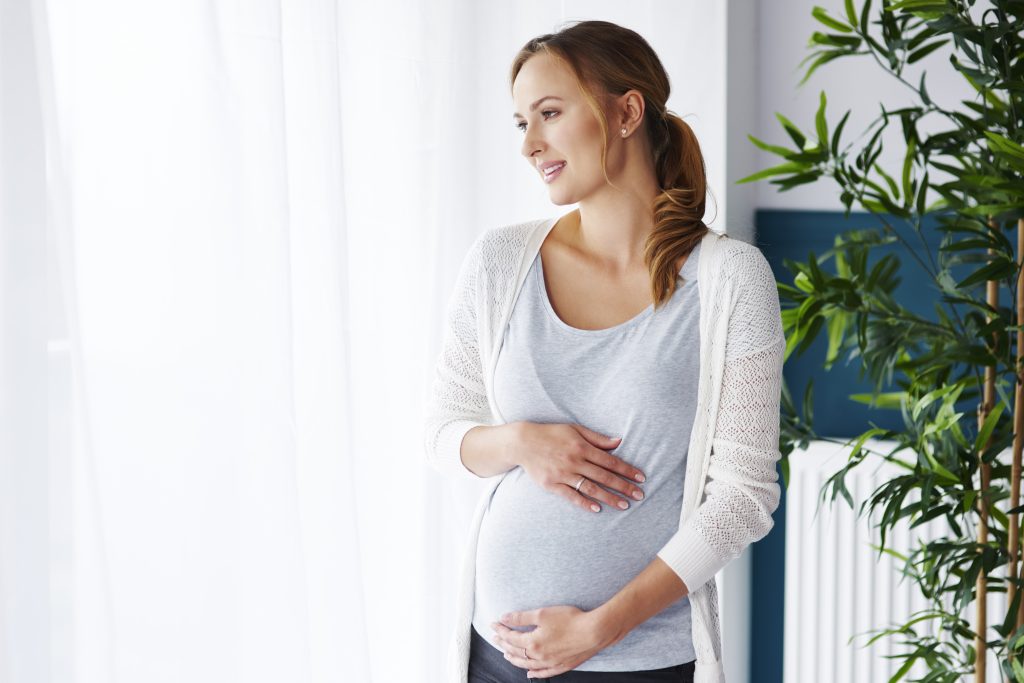- Fast results
- 4,000+ locations
- 4.8 star rating
Need Help? (888) GET LABS
We are currently experiencing technical issues. If you are unable to access your results please call 888 GET LABS
Need Help? (888) GET LABS
Need Help? (888) GET LABS



Pregnancy can be an incredible journey for many women. But it could also come with complications that put maternal and fetal health at risk. One of which is preeclampsia.
Preeclampsia is a blood pressure condition during pregnancy and immediately after childbirth. It is widely considered as the new onset of hypertension. But preeclampsia risk factors stem from different parameters.
Moreover, what’s alarming with this complication is that it could trigger preterm birth, low birth rate, or even stillbirth. Plus, maternal health can be compromised, even resulting in death.
According to the CDC, 1 in 25 pregnancies in the US leads to preeclampsia. With this data, it becomes imperative for all pregnant women to understand preeclampsia risk factors to keep their pregnancy healthy and problem-free.
Preeclampsia is characterized by gestational hypertension. Hence, it only occurs during pregnancy. It ranges from mild to severe symptoms that can endanger both the mother and fetus.
The primary symptoms of mild preeclampsia are high blood pressure, swelling, water retention, and increased protein levels in urine (proteinuria).
On the other hand, severe preeclampsia requiring immediate medical attention exhibit the following symptoms:
The exact cause of preeclampsia is still unknown. However, the degree of complication brought about by this condition is well-documented.
The following are the critical effects of preeclampsia:
Fetal Health Impact
Maternal Health Impact
Nevertheless, not all pregnant women have inherent susceptibility to preeclampsia. So, to determine your likelihood of developing the condition, it’s essential to assess if you are at risk based on known factors.

Countless studies have uncovered the risk factors or preeclampsia that pregnant women should watch out for.
By learning about these conditions, your obstetrician can recommend the appropriate preventive measures and treatment. In addition, it increases your chances of dodging preeclampsia altogether.
Here are some of the most preeclampsia risk factors you should be familiar with:
Factors that are proven to trigger severe preeclampsia are often pre-existing conditions. This means you may already have these disorders before getting pregnant – whether you’re aware of it or not.
Chronic high blood pressure before pregnancy increases the risk for preeclampsia. After all, hypertension is the primary trigger for the condition.
Likewise, women who have experienced preeclampsia also have higher risks for later hypertension.
A study published in the Journal of Maternal-Fetal and Neonatal Medicine highlighted that women who have had preeclampsia have higher rates of developing chronic hypertension after pregnancy than those without preeclampsia.
As a result, doctors advocate for the inclusion of pregnant-related conditions like preeclampsia in assessing women’s risks in developing cardiovascular diseases.
The relationship between hypertension and diabetes is pretty straightforward. According to John Hopkins Medicine, people with diabetes will develop chronic blood pressure twice as high as those without diabetes.
As it turns out, high sugar levels in the blood can damage the arteries. This makes them vulnerable to hardening, causing high blood pressure and heart disease.
With that, women diagnosed with diabetes before pregnancy are at risk of preeclampsia. The same goes for those who develop gestational diabetes.
That is why obstetricians are keen on checking their patients’ blood sugar levels through blood tests such as the glucose plasma blood test.
Chronic kidney disease (CKD) is another risk factor for preeclampsia.
CKD affects blood flow as the renal function is disrupted. Furthermore, it leads to high blood pressure and cardiovascular diseases.
Because the health impacts of kidney injury can be severe, women diagnosed with CKD opt to have closer monitoring once they get pregnant. However, natural pregnancy is discouraged in most cases, considering how high the complications can be.
CKD can endanger both the mother and the fetus and not just through preeclampsia.
If you experience symptoms suggesting kidney problems, you can go through lab testing like the creatinine blood test. This will allow your doctor to diagnose conditions like CKD.
Women with autoimmune diseases are at risk of experiencing complications during pregnancy. This includes preeclampsia.
Autoimmune diseases like systemic lupus erythematosus (SLE) have impaired immune responses wherein the immune system attacks healthy cells.
On the other hand, a woman’s immune responses directly affect fetal gestation during pregnancy. Therefore, aggravated immunological reactions such as persistent inflammation can disrupt blood pressure and increase the risk for preeclampsia.
If an autoimmune disease runs in your family or you observe related symptoms to the condition, it’s best to consult your doctor first before trying to get pregnant. You will most likely undergo testing, including the ANA blood test, for proper diagnosis.
Nonetheless, if you were made aware of the condition during pregnancy, don’t worry. Your obstetrician can work on an effective plan to protect you and your baby.
Even without the above mentioned conditions, you can still develop preeclampsia. There are moderate risk factors you should watch out for, like the following:
Advanced maternal age has always been a critical factor for many pregnancy-related complications. This goes with the fact that the number of viable eggs decreases age. Egg cell quality also tends to go down, leading to chromosomal disorders.
When it comes to preeclampsia, women of advanced age who got pregnant for the first time are more likely to have the condition compared to their younger counterparts.
In a study published on BMC Pregnancy Childbirth, 9.4% of women beyond 35 show preeclampsia. On the other hand, 6.4% of the younger pregnant women cohort exhibited the condition.
Furthermore, preeclampsia also appears to be a risk factor for teenage pregnancies. Women who
According to the CDC, polycystic ovary syndrome (PCOS) affects about five million US women. While PCOS usually hinders pregnancy, a woman who has the condition and successfully gets pregnant will have to be more cautious against preeclampsia.
Data shows that PCOS patients have a higher risk of preeclampsia and are three times more likely to miscarry. Moreover, a woman who suffers from both conditions will most likely become susceptible to cardiovascular diseases in the future.
Obesity affects women in many ways, especially when it comes to reproductive issues. For example, your weight has an impact on the development and PCOS. And during pregnancy, it also becomes a factor for several conditions.
That being said, maternal weight is considered another risk factor for preeclampsia.
In a study published in the International Journal of BioMedicine, women with low body mass index (BMI) have a 4.3% chance of developing preeclampsia. In comparison, those with 35 kg/m2 BMI and above have a 13.3% risk for the condition.
The substantial difference suggests that weight plays a critical factor in preeclampsia. Plus, cholesterol levels, which typically spikes among women suffering from obesity, primarily increase blood pressure.
For women who have had preeclampsia during their previous pregnancy, the risk of the condition remains once they get pregnant again.
Preeclampsia is more common during first-time pregnancies. However, women still likely experience preeclampsia in their subsequent pregnancies, especially if other risk factors are present.
On the other hand, another impact of preeclampsia history on the following pregnancy is increased risk for a small-for-gestational-age infant or low birth weight.
In the same way, if it’s your first time getting pregnant and you have a family history of preeclampsia, you also have a higher risk for the condition. This tendency runs through the genetic disposition towards high blood pressure during pregnancy.
Carrying twins might be exciting, but it could also come with complications – and preeclampsia is one of them.
According to data, multifetal pregnancies have about a 9.5% higher risk rate for preeclampsia than single-fetal pregnancies.
Twin pregnancies already have multiple risks in themselves. But with preeclampsia, evidence points to the increased placental mass as a critical factor for the condition.
Naturally, multiple fetuses require a bigger placenta. Likewise, blood flow also alters, considering you are bound to nourish two or more babies. So, if other confounding preeclampsia factors are present, the probability of developing the condition is higher.
Getting pregnant after a long time could become a challenging experience.
For example, a woman following another pregnancy after ten years is three times more likely to develop preeclampsia than those who got pregnant for the first time.
On the other hand, women who get pregnant after two to four years have lower risks for preeclampsia.
One factor tied up to this event is maternal age. Likewise, experts also associate the likelihood of changing partners, influencing interbirth intervals.
According to research published in the Medical Journal of Obstetrics and Gynecology, during the second pregnancy, the likelihood of preeclampsia for having a baby with the same father is about 1.2%. However, if the father is different, this rate increases to 2%.
Pregnant women are prone to have urinary tract infections (UTI) due to the positional changes in the urinary bladder.
As the fetus grows, the bladder and neighboring organs are squeezed or shifted, resulting in a better entry for disease-causing microbes.
UTI itself is a threat to maternal and fetal health. But it could also lead to complications like preeclampsia.
However, the exact relationship between UTI and preeclampsia is yet to be strengthened. While some studies are certain that the infection triggers the condition, others are less confident of this path.
Nonetheless, what’s clear is that an untreated UTI among pregnant women can lead to kidney problems prompting hypertension. And as mentioned earlier, high blood pressure is the primary symptom of preeclampsia.
Unfortunately, in vitro fertilization (IVF) makes women predisposed to preeclampsia due to the increased risk of defective placentation.
Placentation is the process wherein the placenta is formed. When an embryo implants on the uterine walls, the placenta begins to form.
This organ houses the fetus, provides oxygen and nutrients and removes the wastes. It has connections to the mother’s blood vessels and allows the passage of molecules through the umbilical cord.
When a woman undergoes IVF due to infertility, the chances of having a defective placenta are higher because of genetic disposition. As a result, the risk for preeclampsia also goes up since health issues like chronic inflammation, and damaged blood vessels occur.

The impact of preeclampsia can’t be understated. However, the condition can be prevented with awareness and proper monitoring.
Here are the best actions you can undertake to reduce the risk of preeclampsia.
Pregnant women who have had healthy terms and successful birth would tell you never to miss out on your prenatal checkups. This way, both you and your baby’s health can be thoroughly checked.
You get to go through proper testing to assess your risks for complications like preeclampsia. Likewise, you can establish a good relationship with your obstetrician, which is always beneficial during and after your pregnancy.
Hypertension goes on top of the list of high-risk factors for preeclampsia. Hence, it only makes sense to monitor your blood pressure regularly. You can use blood pressure monitoring devices at home with your doctor’s approval.
Also, another factor to avoid is being overweight or going way past the recommended BMI. Unhealthy weight gain can also trigger hypertension.
So, it’s best to always be cautious with your weight during pregnancy.
It’s almost common knowledge that pregnant women shouldn’t get stressed. However, sometimes this advice is overlooked.
But with the inevitable connection of stress to high blood pressure, a stress-free pregnancy becomes imperative. Again, high blood pressure relates directly to preeclampsia.
With that, pregnant women must have all the support they need from the first to the last term. Likewise, it would also help to avoid getting stressed consciously.
Find an effective outlet for your anxiety. You can also consult your doctor for recommended ways.
Craving for a specific food is pretty common during pregnancy. However, it’s no excuse to indulge in unhealthy foods, especially those high in salt.
Salty food triggers gestational hypertension. Again, this is the hallmark of preeclampsia. Therefore, it’s best to stir clear salty and highly processed food like lunch meats, chips, mixed nuts, pretzels, tortillas, etc.
It’s a common misconception that pregnant women should not exercise anymore. However, while high-risk pregnancies are discouraged from strenuous activities, exercise for healthy pregnant women is not prohibited. It is even encouraged.
Exercise can reduce discomforts and improve physical posture during pregnancy. Likewise, it also reduces the risks for gestational hypertension and diabetes, which are high-risk factors for preeclampsia.
Consult your doctor which exercise works best for your pregnancy to avoid any problems along the way.

Women should be aware of preeclampsia whether they are planning to get pregnant or already are.
The complications of this condition can substantially impact both physical maternal and fetal health. But it could also bring psychological distress to women that could last for a long time.
Fortunately, with the correct information, preeclampsia can be avoided altogether. All you need to do is work with your obstetrician and follow the essential tips on keeping your blood pressure and sugar levels on the healthy side.
Likewise, take all the necessary blood tests recommended by your doctor. That way, you get ahead of any risk, not just for preeclampsia.


We now offer pharmacy discounts through our PersonalabsRx platform.
We now offer pharmacy discounts through our PersonalabsRx platform.